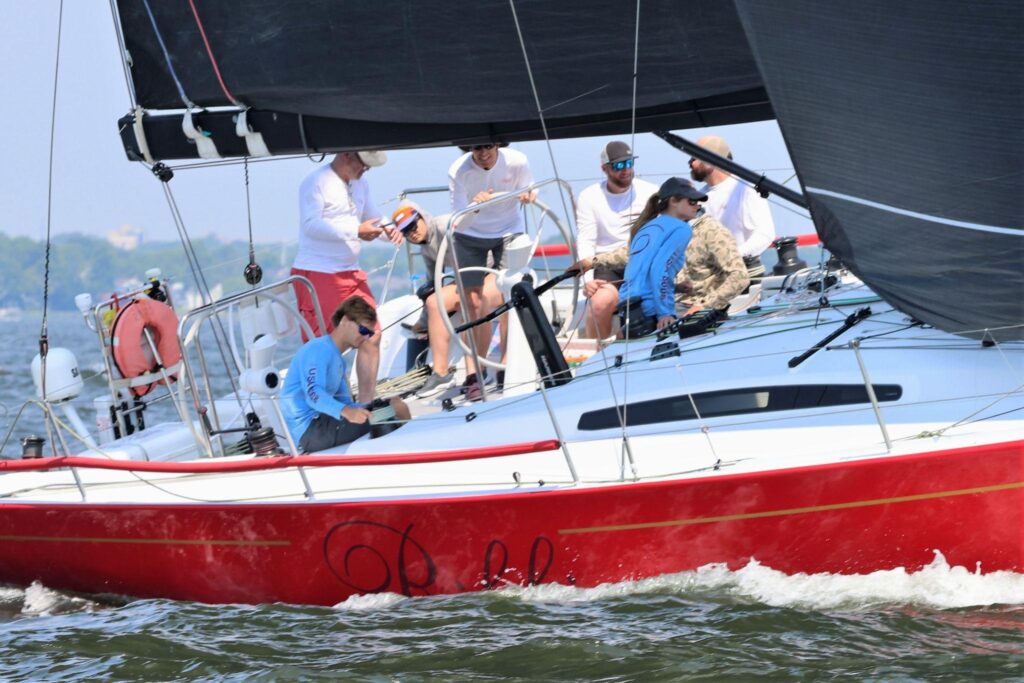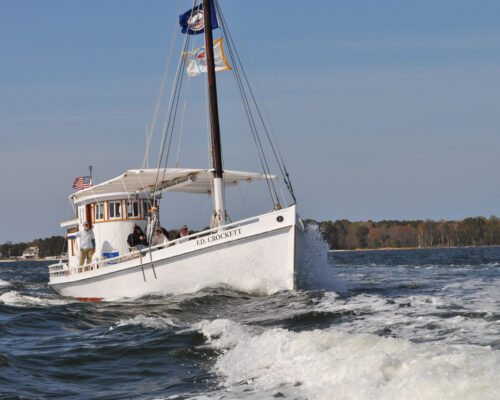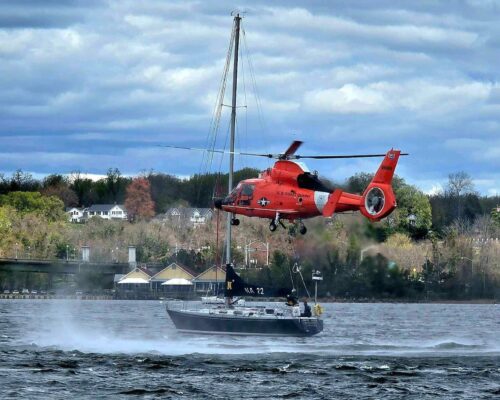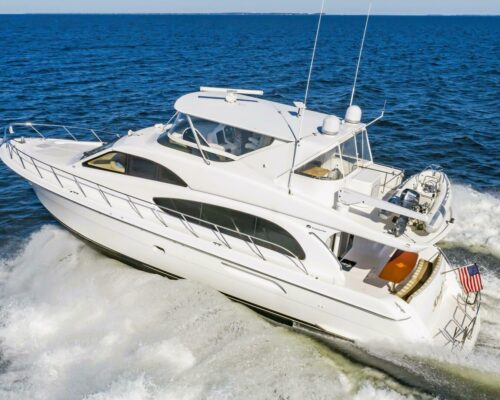The 39th biennial running of the Annapolis-to-Newport Race proved to be a true sailing adventure. With extreme weather systems hitting the Eastern Seaboard, more than half of the fleet retired before exiting the Chesapeake Bay. A fleet of 60 boats in nine classes began the race and 31 of them elected to retire rather than risk damage or breakdown during the ocean passage.
The 475-mile regatta, hosted by the Annapolis Yacht Club, is unique in that it offers two very distinct legs: first, a 120-nautical-mile track south down the Chesapeake, then a hard left turn and another 355 nautical miles north up to New England. Racers began on either Friday evening or Saturday morning, depending on class.
For this year’s A2N, the two legs additionally brought two very distinct sailing experiences. Race organizers had to postpone Friday’s start by six hours because there was essentially no wind on the Bay, but a pressure system building up north threatened big seas and a pounding upwind course to Newport, Rhode Island. The weather forced skippers to evaluate both their crews’ and their boats’ strength; the conditions left very little room for error or weakness.
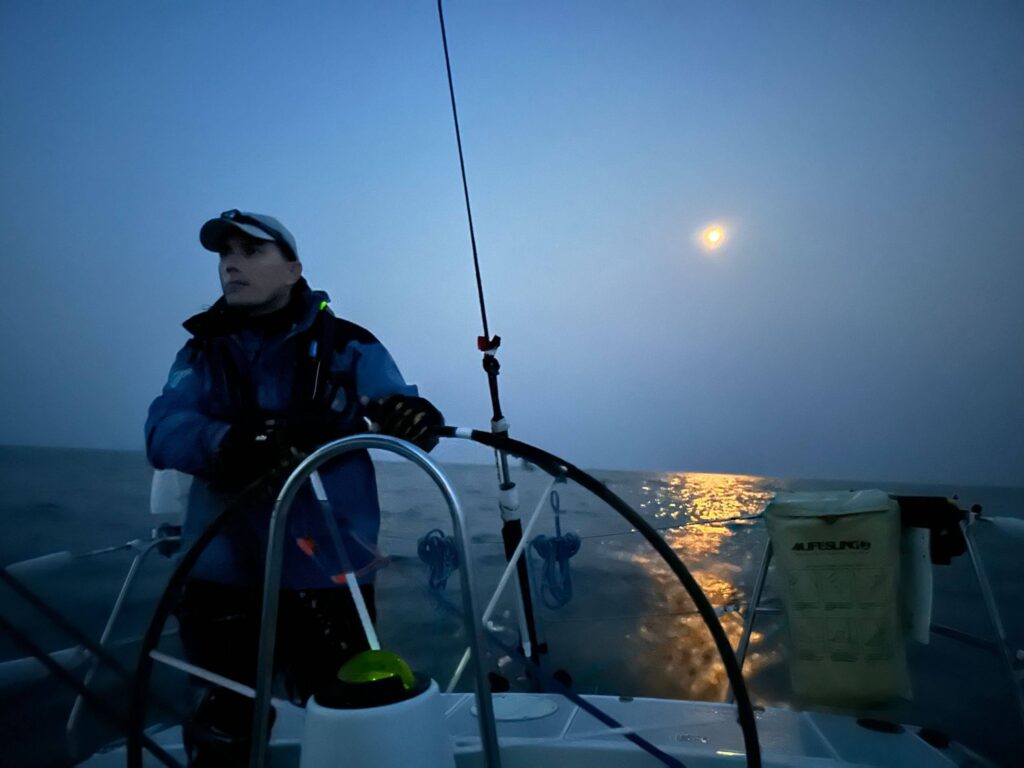
Crewmember Rebecca Hurd’s entrant Kirawan, a 53-foot Philip Rhodes beauty built in 1936, never even made it to the line. While standing at her boarding gate at Logan International Airport in Boston, she received a text from her skipper telling her to pack it in and head home.
“It was definitely the right move,” she says. “We wouldn’t have done well in the light breeze coming down the Chesapeake, and the conditions once we left were predicted to be ‘boat-breaking’—especially for Kirawan.”
On Saturday morning, the faster classes were met with a downwind start in 6 to 8 knots of breeze. While the ebb tide helped push the boats out of Annapolis, the game quickly became one of maintaining forward momentum as variable breeze patterns and dead spots made the trek south more of a slog.
This changed as fleets got closer to the Chesapeake Bay Bridge-Tunnel. By the time boats reached the Potomac River, winds were consistently pushing 25 knots, and the offshore forecast was calling for 25- to 30-knot winds and 10- to 15-foot seas.
It was a critical decision point for many boats, as they evaluated the health and safety of their crews and the preparedness of their vessels.
“As of 0730 on Sunday, June 4, 17 boats from the Friday start and six boats from the Saturday start have retired,” race organizers stated early Sunday morning. “All calls to the Race Office have reported crew and vessels are safe and they were either heading back up the Bay to the greater Annapolis area or tucking into Virginia for a good night’s sleep.”
One such boat was Glenn Doncaster’s Arcona 465, Nanuq. Doncaster has dominated his classes in earlier races on a Saber 426 of the same name. The new Nanuq is significantly sportier.
“The boat is very powerful,” he says. “It’s fast, and it’s demanding of the crew. We race for fun, but I realized we needed another three people for the conditions. We like to have fun and race sailboats, and looking at the conditions, I didn’t see a purpose for it.”
The 2019 Annapolis-to-Newport Race marked the maiden voyage for Rikki, a Reichel-Pugh 42 that Bruce Chafee of Boston bought that year. Rikki placed last among five finishers that year in ORC 1A class because “we took a wrong turn” after rounding the Chesapeake Bay Light, Chafee said. Chafee and crew enjoyed significantly more success in their second appearance in the classic offshore event.
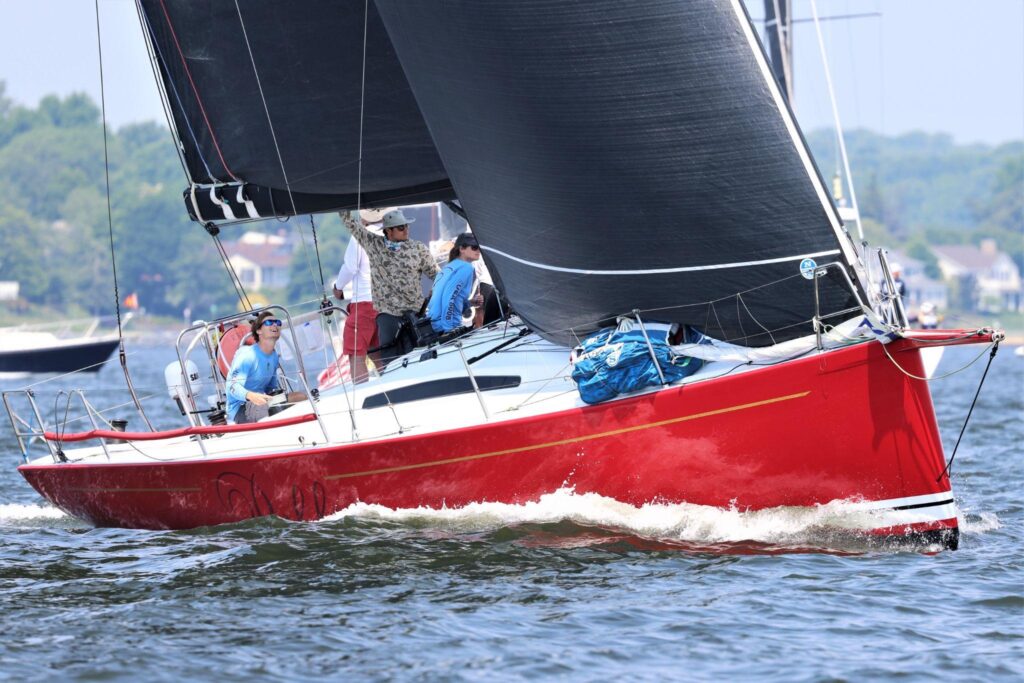
Chafee and crew sailed brilliantly in a tough, grueling edition of the A2N, capturing line honors, and likely earning the overall victory on corrected time as well. Rikki crossed the finish line at the Castle Hill Lighthouse at the mouth of the Narragansett Bay at 6:42 Tuesday morning to easily earn the elapsed time victory.
Cookie Monster, the second boat across the line finished almost eight hours later. The Salona 380 owned by Eastport Yacht Club member Stephen Hale got the horn from the Annapolis Yacht Club race committee at 2:40 in the afternoon. Full results are posted here.
By then, Rikki had been hauled out of the water and Chafee was resting comfortably at his apartment in Boston. “It feels great. My team and I are ecstatic. Everyone did a super job and we’re all very happy about it,” Chafee said when contacted by phone. “We sailors have the expression that someone pulled a horizon job and I guess we really did because we did not see any boat over the horizon.”
“The Rikki program has come really far since that first race in 2019,” Chafee said. “Just the way we equip the boat, know the boat and race the boat. My crew, who are all young dinghy sailors, has really jelled into a fantastic offshore racing team.”

